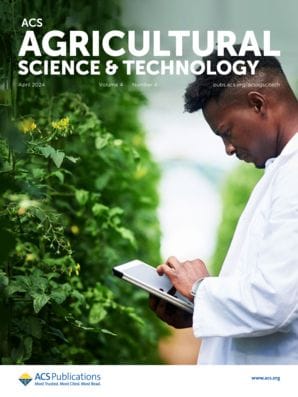A new study provides reassuring insights into the minimal risks of pesticide exposure for golfers on treated courses, ensuring your next round is both safe and enjoyable.

Spring brings more than just blooming flowers and warming weather; it's also the start of golf season for many enthusiasts. As golfers gear up to hit the fairways, their focus is usually centered around avoiding bunkers and water hazards—not the potential invisible risks lying in the perfectly manicured grass. But behind the scenes, questions linger about the safety of the pesticides used to maintain those lush greens and perfect fairways. However, a recent study published in ACS Agricultural Science & Technology may offer peace of mind to those worried about chemical exposure on the course.
Historically, the use of pesticides in environments like golf courses has prompted concerns about human exposure. Previous studies have highlighted possible risks, particularly with older, more toxic chemical formulations. This new study, led by John M. Clark and colleagues, seeks to assess whether the pesticides currently in use still pose a significant risk to golfers.

Golfer Exposure to Traditional Pesticides Following Application to Turfgrass
DOI: 10.1021/acsagscitech.3c00419
The study was meticulously designed to simulate real-world golfing conditions. The researchers created a "worst-case scenario" on a simulated golf course where all areas were treated with the maximum recommended amount of four different pesticides, each chosen for their low volatility and relatively low toxicity to humans. Volunteers played 18 holes shortly after these chemicals were applied, with some wearing protective suits to capture direct exposure data and others providing urine samples to measure absorbed doses.
The findings were encouraging:
- Turf Transferable Residues (TTR): The pesticides on the turf decreased quickly within hours after application, reducing the chance of significant exposure for golfers starting their game even shortly after spraying.
- Direct Exposure: The majority of pesticide residues were found on the hands, socks, and lower legs—areas that are more likely to come into contact with treated grass. Interestingly, the air samples showed very minimal inhalation exposure, confirming that dermal contact is the primary exposure route.
- Risk Assessment: The calculated Hazard Quotients (HQ) and Margins of Exposure (MOE) from both direct contact and biomonitoring were well below levels of concern, suggesting minimal risk from these modern pesticides.
This research not only supports the continued use of lower-toxicity pesticides on golf courses, but it also highlights the effectiveness of current application guidelines at minimizing exposure. For the eco-conscious and health-savvy golfer, these findings can allow them to enjoy their game and keep chasing birdies with confidence that they are not being exposed to harmful levels of chemicals. Moreover, these results could influence pesticide management practices beyond the golf course, ensuring both safety and environmental sustainability across various recreational activities.
For those interested in the detailed scientific methods and statistical analysis, the full research article is available in ACS Agricultural Science & Technology. By staying informed, golfers and greenskeepers alike can ensure that the game's environmental impact is as minimal as its risk to human health.
